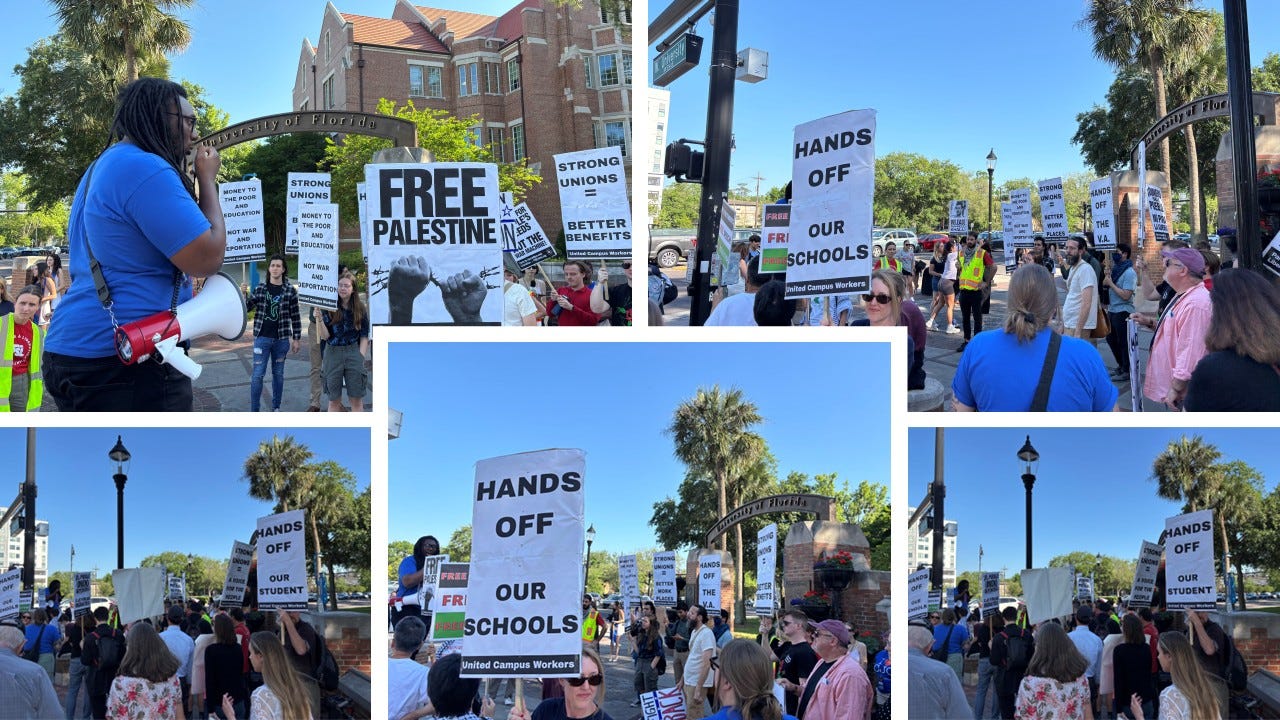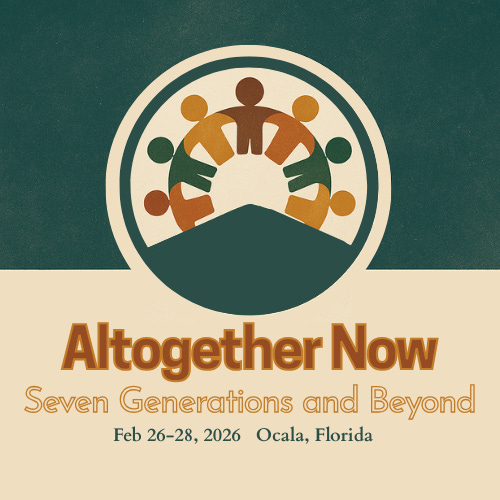“But we had hoped that he was the one to redeem Israel. Yes, and besides all this, it is now the third day since these things took place” (Lk 24:21)
On Thursday, my undergraduate students at the University of Florida began to receive alerts about an active shooter at Florida State University. Some of them, clearly distraught, got up and walked out of class.
Sadly, the incident resulted in two fatalities and six injuries. The suspect, a 20-year-old FSU student, was shot, apprehended, and is currently hospitalized.
Just outside the classroom, people were gathered on campus for a “Hands Off” protest. They were joining a series of nationwide demonstrations that began on April 5, 2025, opposing the Trump administration and its policies. The previous week, campus became the site of heated protests as students rallied against U.S. Immigration and Customs Enforcement (ICE) following the detention of a fellow student, Felipe Zapata-Velásquez.
The latest mass shooting took place on Holy Thursday, a time that commemorates the Last Supper. On this day, Christians reflect on Jesus washing the disciples’ feet as a model of servant leadership, giving the “new commandment” to love one another, and then later his anguished prayer in the Garden of Gethsemane in preparation for his suffering.
This week Christians journeyed with Jesus through betrayal, execution, and burial, as the world around us seemed to mirror the anguish and injustice of Holy Week. As Jesus was betrayed, arrested, and descended into the depths of human suffering, so too have we witnessed innocent lives lost to violence, and vulnerable individuals detained and cast out—echoing the sorrow and despair of Good Friday.
Yet between Good Friday and Easter Sunday lies a seldom-explored space… Holy Saturday. It’s a day that resists tidy resolution, a day that sits heavy with silence, ambiguity, and grief.
Our cultural tendency is to skip the silence, to fast forward to resurrection joy or reactionary activism. But in this moment of national disorientation—with political unrest, gun violence, economic disaster, and deepening divisions—might it be a moment to dwell in the tomb. Does Holy Saturday have something to teach us?
Descent Before Ascent
One often-overlooked component of the incarnation is not just the crucifixion or the resurrection, but the descent into death to release captive prisoners (1 Peter 3:18-20). As the Apostles’ Creed affirms, “He descended into hell.” This descent is not just theological filler—it is a declaration that there is no place so forsaken, no hell so deep, that Christ will not go to liberate. Jesus enters the domain of death, not as a victim, but as a liberator.
As a person in our recovery community articulated at Bible study on Wednesday night, “Jesus showed up with bond money.” Meaning that between his death on Good Friday and his resurrection on Easter Sunday, Jesus descended to the realm of the dead, extending salvation to all who had been bound there since the beginning of time, including potentially even Judas Iscariot, the betrayer.
In today’s America, it’s easier for a 20-year-old to access a firearm and take lives than for a U.S. citizen with brown skin and valid ID to prove their right to freedom. In this world where students are shot in schools and refugees are turned away at borders, where politicians pit neighbors against neighbors and churches bless violence with sanctified language, we must recover the radical message of descent. Jesus does not avoid the suffering of the oppressed—he joins them in it, breaks the locks of their chains, and leads a jailbreak from death itself.
Embracing the Tomb
Holy Saturday represents the disorienting pause between promise and fulfillment. It’s the grief-soaked waiting of communities who’ve protested, prayed, voted, and wept—only to see injustice persist. Only to hear the haunting laughter shared between Donald Trump and Nayib Bukele over Kilmar Abrego Garcia’s deportation, which eerily mirrors the partnership between Pilate and Herod and their cynical disregard for justice. A political situation in which the machinery of empire still trades human lives for power, applause, and control. It is Emmaus Road bewilderment: “But we had hoped…”
Our situation requires Contextual Intelligence. As faithful churches navigate the uncertainty, this is the capacity to read a moment for what it truly is and respond wisely. This kind of wisdom is rooted in the pattern of Jesus’ incarnation: self-emptying, descent, and faith-filled waiting (Phil. 2:5–11).
Disorientation is not failure; it is the edge of transformation. In liminality—the uncomfortable space between what was and what will be—we are formed. Jesus’ tomb-time becomes our own. Not as spectators, but as participants in the sacred work of waiting, lamenting, and listening for the voice of resurrection.
What the Disciples Did (and Didn’t Do)
The Scriptures show us that after the burial, the disciples didn’t launch a strategic plan. They didn’t storm the gates of power. They waited. They wept. They hid. They questioned. They clung to one another.
This isn’t passivity—it’s profound contextual intelligence. In a society that rewards instant reactions and hot takes, the discipline of Holy Saturday calls us to prayerful restraint. It asks us to sit with hard questions: What has died in our public life? What parts of our religious institutions deserve to stay buried? What might resurrection truly mean for a church that has failed to form Christians?
“Just wait” is often the tactic of the oppressor. It’s a tool to silence the oppressed, to sustain injustice. Now is not the time for passivity. It’s not the time to shrink back from courageous, prayerful, and necessary action. Yet somehow Holy Saturday calls us to shift our orientation to the liberating activity of Jesus. Jesus alone can accomplish the harrowing of hell.
Holy Saturday embodies the tension between using our human agency to pursue justice and the faithful waiting for God’s intervention. It reminds us that while we are called to act with courage and compassion, we also live in the mystery of divine timing—where transformation often begins in stillness, surrender, and trust.
The Power of Solitude
Thomas Merton emphasized that true solitude is not an escape from the world but a return to the true self, a sacred inward journey that allows us to unmask the false identities shaped by ego, fear, and external expectations. In silence and contemplation, we encounter the depths of our being and begin to discover the true self… the beloved of God, grounded in grace rather than performance.
For Merton, this inner transformation is not an end in itself, but a necessary step toward reengaging the world with clarity, compassion, and love. Authentic solitude empowers us to move outward not in avoidance, but in solidarity with others, rooted in the peace we find within.
In the liminal space of the tomb, the disciples were wrestling: Was Jesus really the one? What now? Are we next? Who are we really?
As a society, we are in a similar state of wrestling. Can we be a people of justice when our systems are rigged against the most vulnerable? Can the church speak peace while aligning with power and division? Will we emerge from violence and fear into something truly new?
This tomb-time invites us not into paralysis, but into deeper discernment.
The Gift and the Threat of Tomb Time
In the face of national trauma—the growing list of the disappeared, another mass shooting, another abuse of power—there is a temptation to rush toward “normal.” But normal was not working. The “normal” glorified violence, sanctified greed, and ignored the cries of the suffering.
Consumer Christians will want a normal Easter celebration with all the bells and whistles. The same people watching the lives of the vulnerable and disinherited being torn apart and saying, “this is what I voted for!” Will be sitting in our church pews across the country. They will want their preachers to sanitize the story. To disconnect it from the historical events happening right now.
But the Easter story begins “… while it was still dark…” (John 20: 1). And in this darkness, we are reminded that resurrection hope begins in the tomb, and justice often rises through protest, lament, and solidarity with the oppressed.
Tomb-time is not about comfort, it’s about confrontation. It is about allowing what must die to die, so that what God longs to resurrect can rise. If we come out of this moment unchanged, we will have squandered its gift.
Resurrection as Disruption
Resurrection is not replication—it is disruption. Jesus rises in the same body, yet it is transformed. His wounds remain, but they are no longer signs of defeat, they are proof of divine solidarity with the suffering.
As we contemplate what resurrection might look like for our fractured political systems, wounded churches, and fearful communities, we must not look to rebuild what was. We must look for what can be. Resurrection demands we name our powerlessness, trust in God’s intervention, and join Christ in the descent to raise up those entombed by injustice.
Joining Jesus in the Depths
Perhaps our calling now is not to climb but to descend… to descend into the sorrow of our nation, the trauma of the marginalized, the fear of children afraid to go to school. To descend, not in despair, but in defiant hope. Jesus is already there. He is liberating the captives. He is turning graves into gardens.
Resurrection begins in the tomb. Let us not flee it too quickly. Let us dwell there long enough to see what only God can raise.









Thanks for the insight on Holy Saturday. I will look at it more productively from now on.
America feels so unsafe right now. Thanks for offering a word of hope.